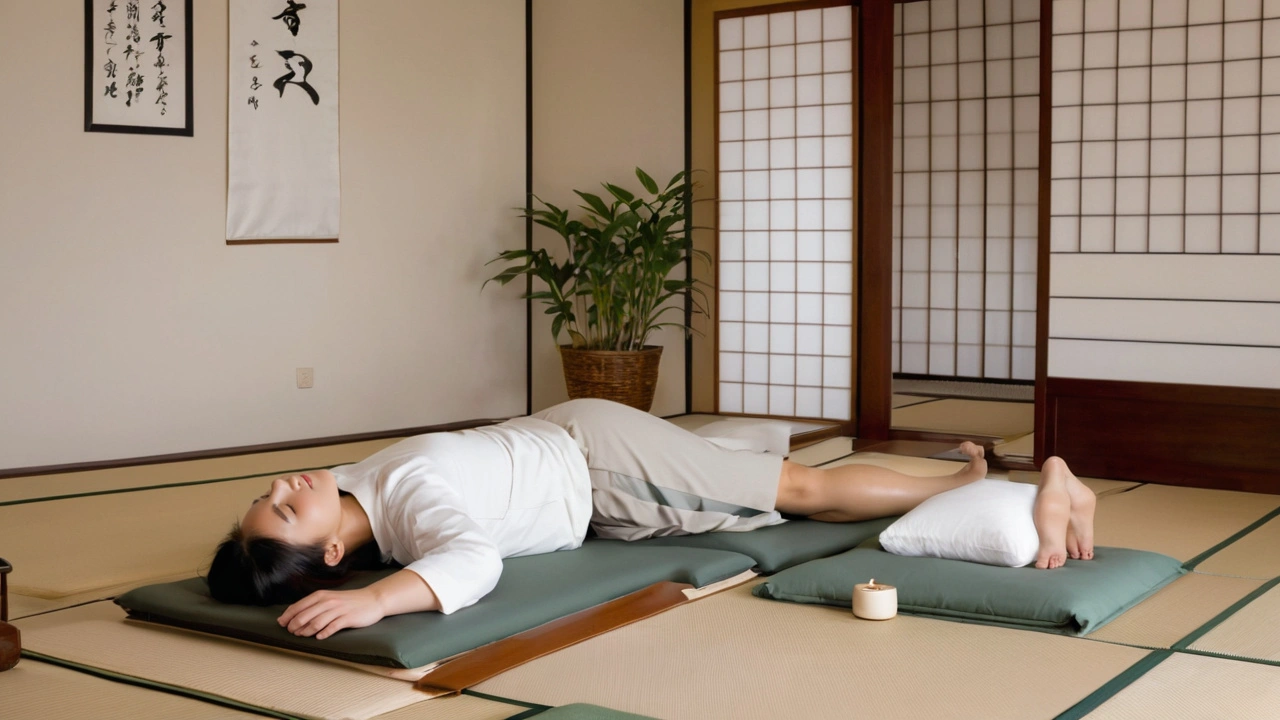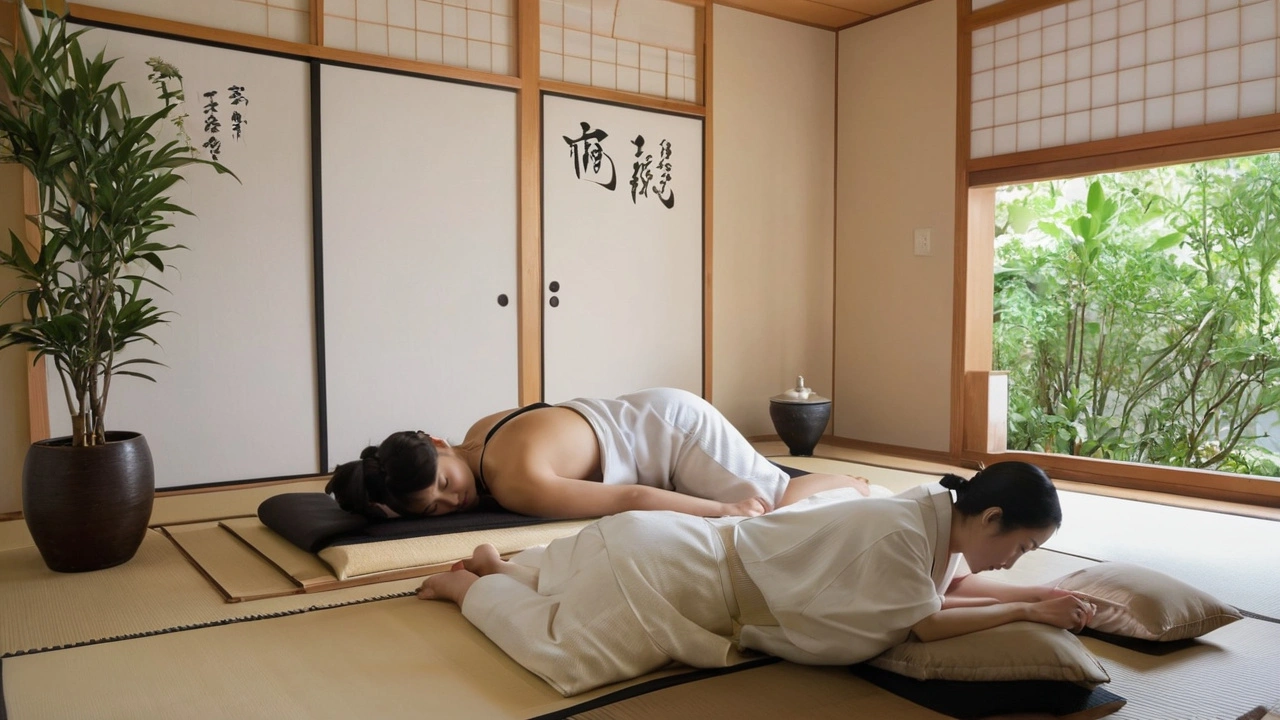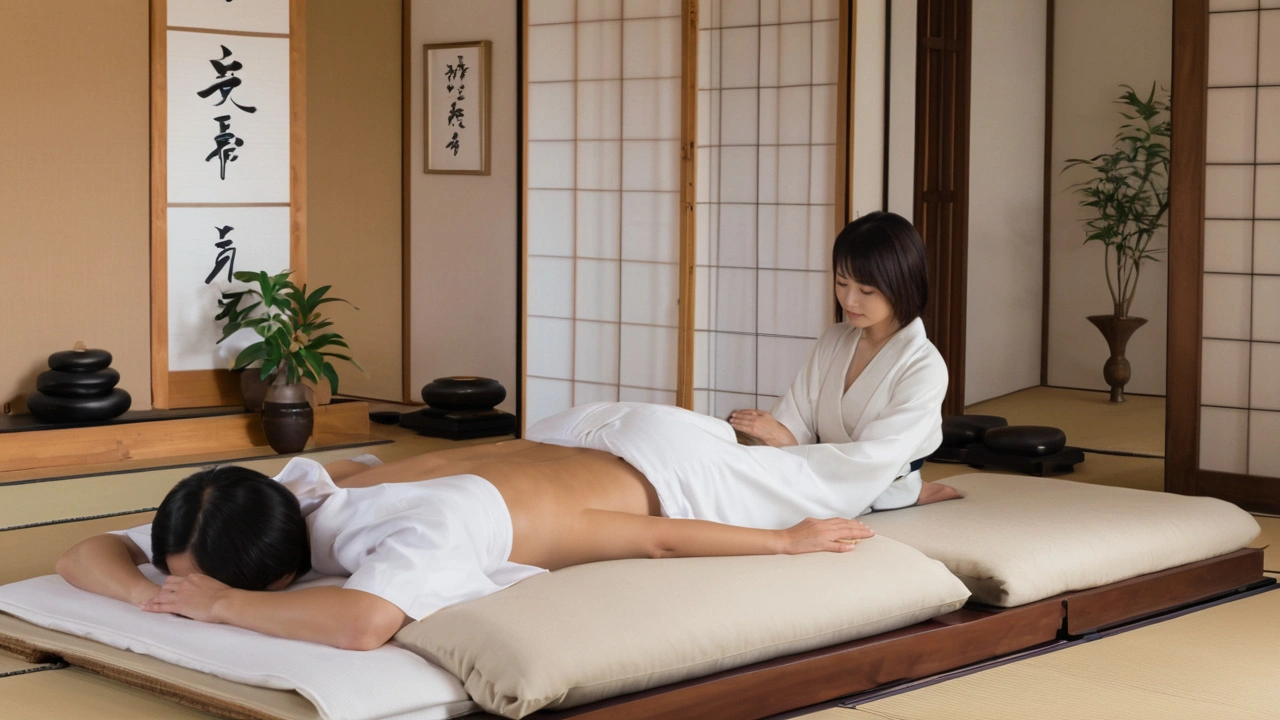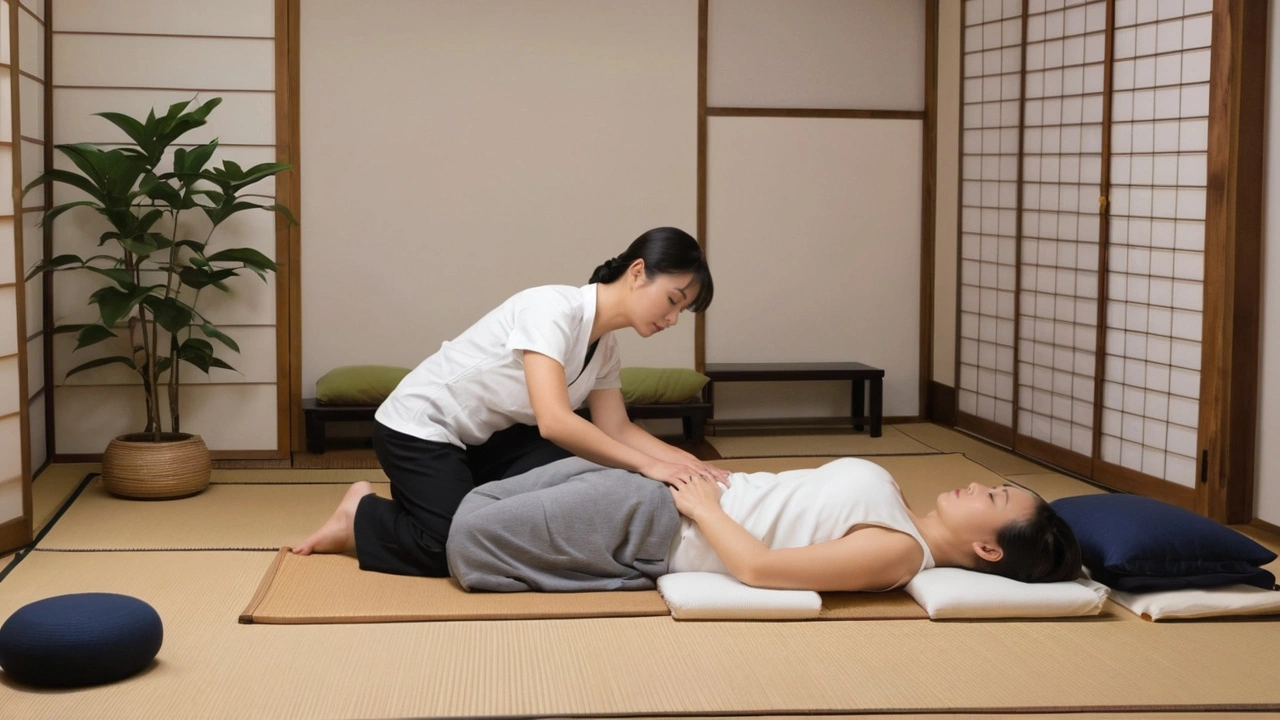Shiatsu for Beginners: Essential Guide to Mastering Techniques

Many people today are drawn toward natural and holistic health practices to improve their well-being. Among the various options, Shiatsu stands out as an exceptional method for its simplicity and effectiveness. Shiatsu, a Japanese form of bodywork, uses the fingers to press on specific points, helping to restore balance and promote relaxation.
Diving into Shiatsu might seem overwhelming at first, but with a bit of guidance and practice, anyone can master the basic techniques. Whether you're looking to practice on friends and family or even pursue a professional path, this guide will provide the foundational knowledge you need. From understanding its roots to learning basic moves, you'll find everything you need to start your Shiatsu journey right here.
What is Shiatsu?
Shiatsu is a traditional Japanese healing art that aligns closely with other forms of Asian bodywork, such as acupuncture and acupressure. The term Shiatsu translates directly to 'finger pressure,' which accurately describes the primary technique used. Practitioners apply manual pressure using their fingers, thumbs, and palms to specific points on the body, following the body's meridians or energy pathways. It's believed that this helps to unblock and balance the flow of energy, or 'Qi,' thereby promoting overall health and wellbeing.
The origins of Shiatsu can be traced back to Japan in the early 20th century. Tokujiro Namikoshi is often credited with founding modern Shiatsu. He emphasized the use of pressure on trigger points to relieve ailments and pain. His work led to the recognition of Shiatsu as a therapeutic practice in Japan, eventually gaining global acknowledgment. Unlike Western massage techniques that focus primarily on muscles and soft tissues, Shiatsu concentrates on the body's energy flow, offering a more holistic approach to health.
Shiatsu's foundational principles are deeply rooted in Traditional Chinese Medicine (TCM). According to TCM, the body has a complex network of energy channels known as meridians, through which life energy flows. If this flow is disrupted, it can lead to various physical and emotional issues. Shiatsu aims to restore balance to these energy pathways, thereby promoting healing and relaxation. Incorporating elements of stretching, joint manipulation, and pressure point activation, it’s a multi-faceted approach to wellness.
Despite its ancient roots, Shiatsu has adapted to the needs and knowledge of modern society. It’s practiced in diverse settings, from professional wellness centers to living rooms. Many people find it beneficial for stress relief, pain management, and even as a complementary treatment for medical conditions. Scientific studies have started exploring its benefits, though the anecdotal evidence from practitioners and patients is already compelling. As one Shiatsu practitioner, Masunaga Sensei, once said,
"Shiatsu does not cure the body—it helps the body to cure itself."
For beginners, it’s essential to grasp that Shiatsu is more than just a set of techniques. It’s a philosophy that emphasizes balance, harmony, and the natural ability of the body to heal. Engaging with Shiatsu can be a transformative experience, both for the giver and the receiver. By understanding its history, principles, and applications, you are taking the first step towards integrating this profound practice into your life. As you continue to learn about Shiatsu, you'll discover it’s a versatile and deeply rewarding practice that can enhance your overall well-being.

Basics of Shiatsu Techniques
Shiatsu, meaning “finger pressure” in Japanese, is a healing practice that emphasizes balancing the body's energy by applying pressure to specific points, known as acupressure points. The foundation of Shiatsu is rooted in traditional Chinese medicine and the concept of qi, or life energy, which flows through meridians in the body. By manipulating these points, a practitioner can help to restore balance and promote health. The process involves using thumbs, fingers, elbows, and even knees to stimulate these meridians and encourage healing.
For beginners, grasping the key techniques is essential. One of the fundamental methods is the use of thumbs to apply pressure along the meridians. This requires knowing the precise locations of these channels, commonly found along the back, legs, arms, and even the face. Practitioners often use a rhythmic, steady pressure, holding each point for a few seconds before moving to the next. This should be done in a manner that is firm yet gentle, ensuring the recipient remains comfortable throughout the process. Those new to Shiatsu must also learn to use body weight rather than muscle strength to avoid fatigue and provide consistent pressure.
Another technique involves stretching and joint rotation, which helps in increasing flexibility and relieving tension in the muscles. Gentle stretching of the arms, legs, and neck can enhance the flow of energy and promote relaxation. In a typical session, a practitioner may also incorporate palm pressing, which involves using the palms to knead and press larger areas of the body. This method is particularly beneficial for areas like the back and thighs, where larger muscles can benefit from broader pressure. These techniques work synergistically to create a holistic experience.
Practitioners should always maintain proper posture and be mindful of their breathing. This mindfulness extends to creating a serene environment where the recipient can relax fully. The importance of a calm setting cannot be overstated, as it plays a crucial role in the effectiveness of Shiatsu. Light, soothing music, dim lighting, and a comfortable mat are all elements that contribute to the overall experience. Massage oil is generally not used in Shiatsu, allowing for a firmer grip and more precise application of pressure.
For those just starting, practicing Shiatsu on friends and family is a great way to build confidence and refine technique. Paying close attention to feedback is vital; this helps in understanding the right amount of pressure to apply and which areas may need more focus. Studying diagrams of meridian lines and acupressure points can also be incredibly helpful. Workshops and classes are available for those who wish to delve deeper into the practice and learn from experienced practitioners. Consistent practice is the key to mastering Shiatsu techniques.
“Shiatsu therapy restores balance to the body and mind, promoting health and well-being for the entire person.” – Shiatsu Society
The beauty of Shiatsu lies in its simplicity and the profound impact it can have on one's well-being. Whether you aim to relieve stress, alleviate pain, or promote relaxation, understanding the basic techniques of Shiatsu offers a valuable tool in achieving holistic health. So take the first step, embrace the practice, and discover the healing potential of Shiatsu through mindful touch and connection.

Benefits of Practicing Shiatsu
Practicing Shiatsu offers a plethora of advantages that extend beyond mere relaxation. This ancient Japanese technique has been credited with numerous health benefits for both the body and mind.
One of the most notable benefits is its ability to reduce stress. In our fast-paced, high-stress world, finding effective ways to unwind is crucial. Through the application of gentle pressure on specific points, Shiatsu helps release tension, promoting a profound sense of calm and relaxation. It's akin to hitting a reset button, allowing individuals to return to their everyday tasks with renewed energy and focus.
Shiatsu is also known for its potential to alleviate chronic pain. Many individuals suffering from conditions such as arthritis, back pain, or even migraines have reported significant relief after regular sessions. By targeting and stimulating key pressure points, Shiatsu can help improve circulation, reducing inflammation and easing pain. It’s a natural alternative worth exploring.
Additionally, Shiatsu enhances flexibility and mobility. As the practitioner applies pressure, it not only works on superficial layers but reaches deeper tissues as well. This can significantly improve muscle and joint function. Over time, this enhanced mobility can help prevent injuries and improve overall physical performance.
Another compelling benefit of Shiatsu is its positive impact on the immune system. Regular treatments have been shown to boost immune function by stimulating the flow of lymphatic fluid, which plays a critical role in the body's defense mechanisms. A stronger immune system means better resistance to common illnesses and faster recovery times.
Shiatsu also fosters better sleep. Many people struggle with insomnia or restless nights. The relaxation induced by Shiatsu can help set the stage for more restful and uninterrupted sleep. This improvement in sleep quality leads to better overall health, as sleep is essential for body repair and cognitive function.
"Shiatsu has been a cornerstone of my wellness routine. Its ability to balance the body's energy and promote healing is truly remarkable," states Dr. Hiroko Kato, a renowned expert in traditional Japanese medicine.
Mental clarity and emotional balance are other areas where Shiatsu shines. By promoting relaxation and reducing stress, it indirectly enhances mental clarity and stabilizes emotions. This can be particularly beneficial for individuals dealing with anxiety or depression.
Moreover, Shiatsu can lead to improved digestion. The gentle pressure applied on specific abdominal points can stimulate the digestive system, aiding in the relief of issues like bloating, constipation, and indigestion. Regular sessions can contribute to a more efficient digestive process, ensuring that the body gets the nutrients it needs effectively.
Lastly, Shiatsu can be a valuable tool for harmonizing the body's energy flow. According to traditional Japanese medicine, balancing the life energy, or 'Qi', within the body is essential for maintaining health. Shiatsu aims to correct any imbalances, ensuring that the energy flows freely and optimally. This holistic approach not only addresses physical ailments but also fosters a deeper connection between the body and mind.

Tips for Beginners
Starting your journey with Shiatsu can be both exciting and a bit intimidating. But, with the right approach and mindset, you can quickly get the hang of the basics. Here are some useful tips to help you get started.
1. Begin with Understanding the Basics
It's vital to know the basics before diving deep into Shiatsu. Understanding where the practice comes from, its principles, and techniques is the first step. Shiatsu, which means 'finger pressure,' involves applying pressure to various points on the body to balance energy flow and promote health. Spend some time reading about the history and philosophy of Shiatsu. This background knowledge will give you a strong foundation to understand the techniques and principles better.
2. Practice Regularly
Consistency is key. To become proficient in Shiatsu, practice regularly. Set aside a specific time each day or week solely dedicated to practicing Shiatsu techniques. Start with shorter sessions and gradually increase the time as you become more confident. Use family members, friends, or even yourself to practice. The more you practice, the more comfortable you will become with the techniques.
3. Learn to Listen to the Body
Listening to the body is one of the most important aspects of Shiatsu. Pay close attention to how the body responds to different pressures and techniques. Adjust your pressure based on the feedback you receive. Remember, Shiatsu should not cause pain. It's about finding the right balance to promote relaxation and healing. With practice, you'll develop a better understanding of the body's signals and how to respond to them appropriately.
4. Focus on Breathing
Breathing plays a significant role in Shiatsu. Both the giver and receiver should focus on their breath. Encourage deep, slow breaths to help release tension and promote relaxation. Proper breathing enhances the effectiveness of Shiatsu by helping to synchronize movements and applying pressure with the body's natural rhythm. It's a good idea to practice breathing exercises separately to become more mindful and present.
5. Take a Course or Workshop
While self-learning is valuable, taking a course or workshop can significantly enhance your skills. These structured programs provide hands-on training, professional guidance, and the opportunity to ask questions and receive feedback. Many community centers, wellness clinics, and massage schools offer beginner Shiatsu courses. Keep an eye out for reputable courses led by certified instructors.
6. Keep Learning
Shiatsu is a continuous learning process. Always look for new information, techniques, and developments in the practice. Read books, watch instructional videos, and attend seminars. Joining Shiatsu communities or forums online can also provide valuable insights and support from fellow practitioners. The more you immerse yourself in the practice, the more proficient and confident you'll become.





